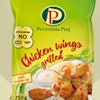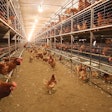
The 2018 U.S. Chicken Consumption Survey shed light on the fight that while chicken remains a protein powerhouse, there is room for growth.
Jonna Parker, principal and fresh foods market research expert with IRI, and Joyce Neth, vice president, director of audience development and research for WATT Global Media, presented findings during the "2018 Chicken Consumption Survey: what consumers want" webinar, hosted by WATT Global Media and sponsored by Evonik on January 22.
“People want to buy more (chicken) and one more trip (to the store) can mean millions," Parker said during the webinar.
Some of this information was previously presented at the 2018 Chicken Marketing Summit.
She explained that while most of the poultry industry understands that chicken is versatile, convenient and healthy, there is still room to better understand purchasing motivators and to connect with buyer's needs. “Consumers are time-starved and confused,” she said.
The 2018 Chicken Consumption Survey found that consumers find claims made on packaging labels confusing and misleading. However, Neth said, "There is more concern about chicken-buying considerations this year than there has been in any other year."
How buying has changed
Chicken sales have changed. Total chicken sales (fresh, frozen and deli) saw a 6 percent growth rate earlier in the decade. From August 2017 to July 2018, there was only a 1 percent growth rate.
In 2012, the sales were dominated by frozen chicken sales; it only made up about 19 percent in that August 2017-July 2018 time frame. During that same period, deli-prepared chicken and fresh refrigerated chicken saw a substantial growth in sales, Parker explained.
“Retailers that sell the most chicken also saw the most growth (within their company),” Parker explained.
Consumer demands have changed the way in which retailers approach customers. As previously mentioned, Parker explained that consumers want to save time while still making the best purchasing decisions. This explains the influx in demand for food kits and grocery stores that have delivery services. People are making nine less trips to the store annually but are buying 5 percent more food each time.
Parker said that since 2010, consumers have said they are eating more meals that are smaller, and a lot of that coincides with the healthier lifestyle people are trying to live.
Although the survey explained that consumers are confused by the packaging, it also indicated that consumers would purchase more if they had more information about the product and that the package is the most desired source for information. A total of 89 percent of chicken consumers surveyed said they would like to be more educated about the product.
The survey also indicated that while chicken remains a top choice over other meat, fewer customers are "buying the product for reasons related to health and nutrition benefits of chicken. Meanwhile, consumers who are choosing plant-based proteins over meat do so because it’s a healthy alternative, “ said Neth. Plant- based protein sales are continuing to grow.
Generation Z is already making up about half of the grocery buying industry, Parker explained. This generation has a very strong opinion and offers a very diverse group of people. There is ample opportunity to create the healthy “halo” around chicken that they desire.
Want to find out more about what influence consumers’ chicken purchasing behavior? Attend the 2019 edition of Chicken Marketing Summit scheduled for July 21-23 at the Belmond Charleston Place in Charleston, South Carolina. You may register now.


















